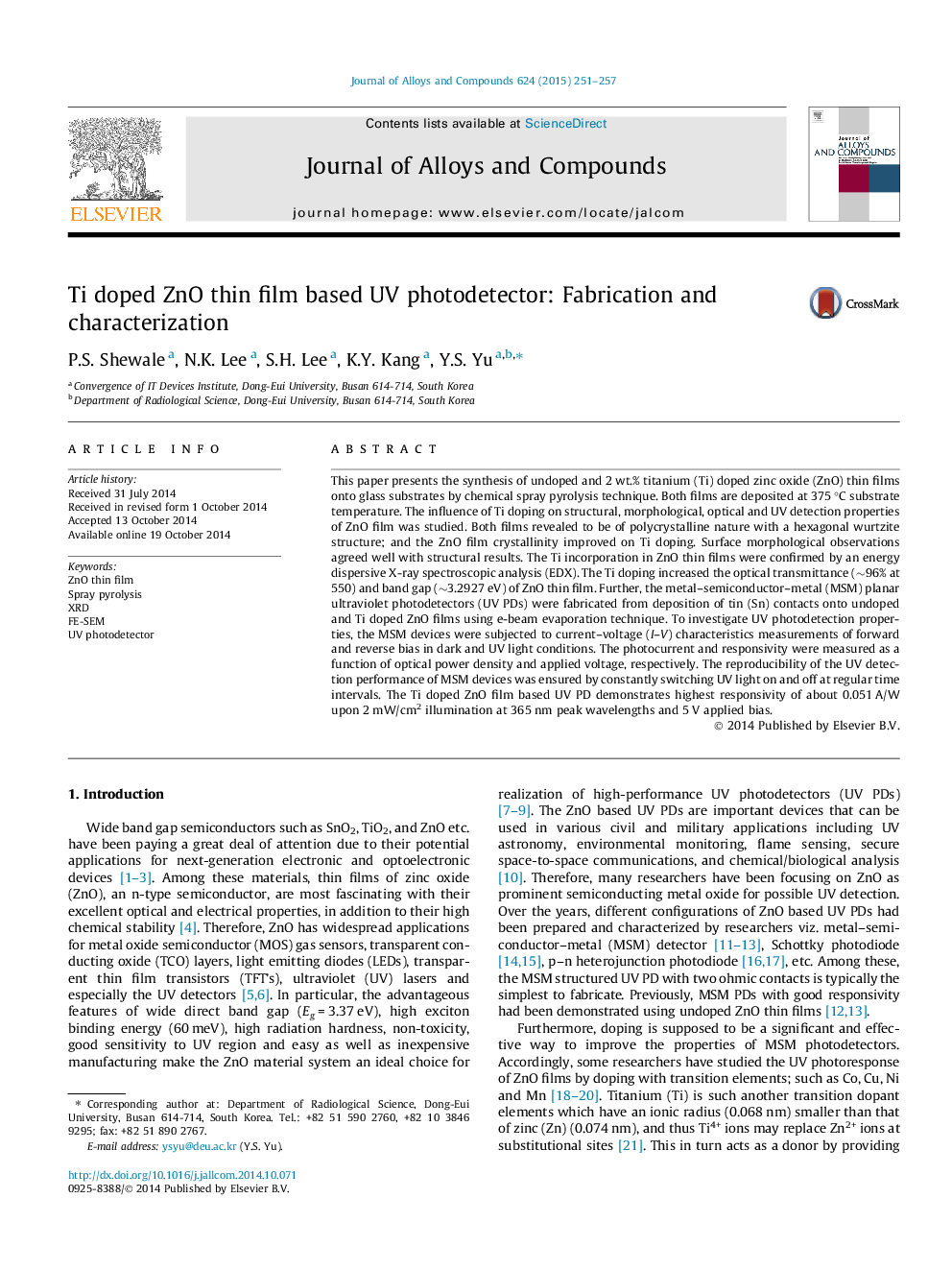| Article ID | Journal | Published Year | Pages | File Type |
|---|---|---|---|---|
| 1609817 | Journal of Alloys and Compounds | 2015 | 7 Pages |
•UV photoconductive undoped and Ti doped ZnO films were grown by spray pyrolysis.•Ti doping effects on physical and UV detection properties of films were studied.•Samples are polycrystalline with a hexagonal wurtzite crystal structure.•Ti doping increases the optical transmittance and band gap of ZnO film.•Ti doping improves the responsivity of ZnO film based MSM UV photodetector.
This paper presents the synthesis of undoped and 2 wt.% titanium (Ti) doped zinc oxide (ZnO) thin films onto glass substrates by chemical spray pyrolysis technique. Both films are deposited at 375 °C substrate temperature. The influence of Ti doping on structural, morphological, optical and UV detection properties of ZnO film was studied. Both films revealed to be of polycrystalline nature with a hexagonal wurtzite structure; and the ZnO film crystallinity improved on Ti doping. Surface morphological observations agreed well with structural results. The Ti incorporation in ZnO thin films were confirmed by an energy dispersive X-ray spectroscopic analysis (EDX). The Ti doping increased the optical transmittance (∼96% at 550) and band gap (∼3.2927 eV) of ZnO thin film. Further, the metal–semiconductor–metal (MSM) planar ultraviolet photodetectors (UV PDs) were fabricated from deposition of tin (Sn) contacts onto undoped and Ti doped ZnO films using e-beam evaporation technique. To investigate UV photodetection properties, the MSM devices were subjected to current–voltage (I–V) characteristics measurements of forward and reverse bias in dark and UV light conditions. The photocurrent and responsivity were measured as a function of optical power density and applied voltage, respectively. The reproducibility of the UV detection performance of MSM devices was ensured by constantly switching UV light on and off at regular time intervals. The Ti doped ZnO film based UV PD demonstrates highest responsivity of about 0.051 A/W upon 2 mW/cm2 illumination at 365 nm peak wavelengths and 5 V applied bias.
